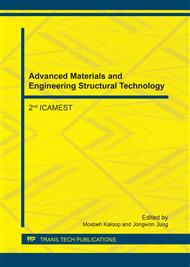p.65
p.71
p.78
p.84
p.89
p.94
p.100
p.106
p.111
The Effects of Deposition Time and Surface Temperature on the TiN Films for KP-4 Steel Mold
Abstract:
In order to improve surface smoothness and increase its surface hardness of the PK-4 steel mold the dependencies of the surface temperatures of substrate, deposition times, and bias voltages applied to the substrate on the TiN film made by the physical vapor deposition were studied. Six main steps of the synthesis process were introduced to improve the robustness. Double applications of the bias voltages increased the surface hardness. The rotating substrates increased the uniformity of the films. 1000 times-magnified pictures were taken to analyze the micro-grains of TiN. SEM pictures were taken to confirm the surface smoothness. Both the surface temperature of substrates and deposition time were affecting factors. The maximal hardness of TiN film deposited on KP-4 was increased by 20%. The surface temperature of substrates contributed to 13% in the increase of hardness. The deposition time also contributed to 6% in the increase of hardness respectively.
Info:
Periodical:
Pages:
89-93
Citation:
Online since:
April 2017
Authors:
Keywords:
Price:
Сopyright:
© 2017 Trans Tech Publications Ltd. All Rights Reserved
Share:
Citation:


